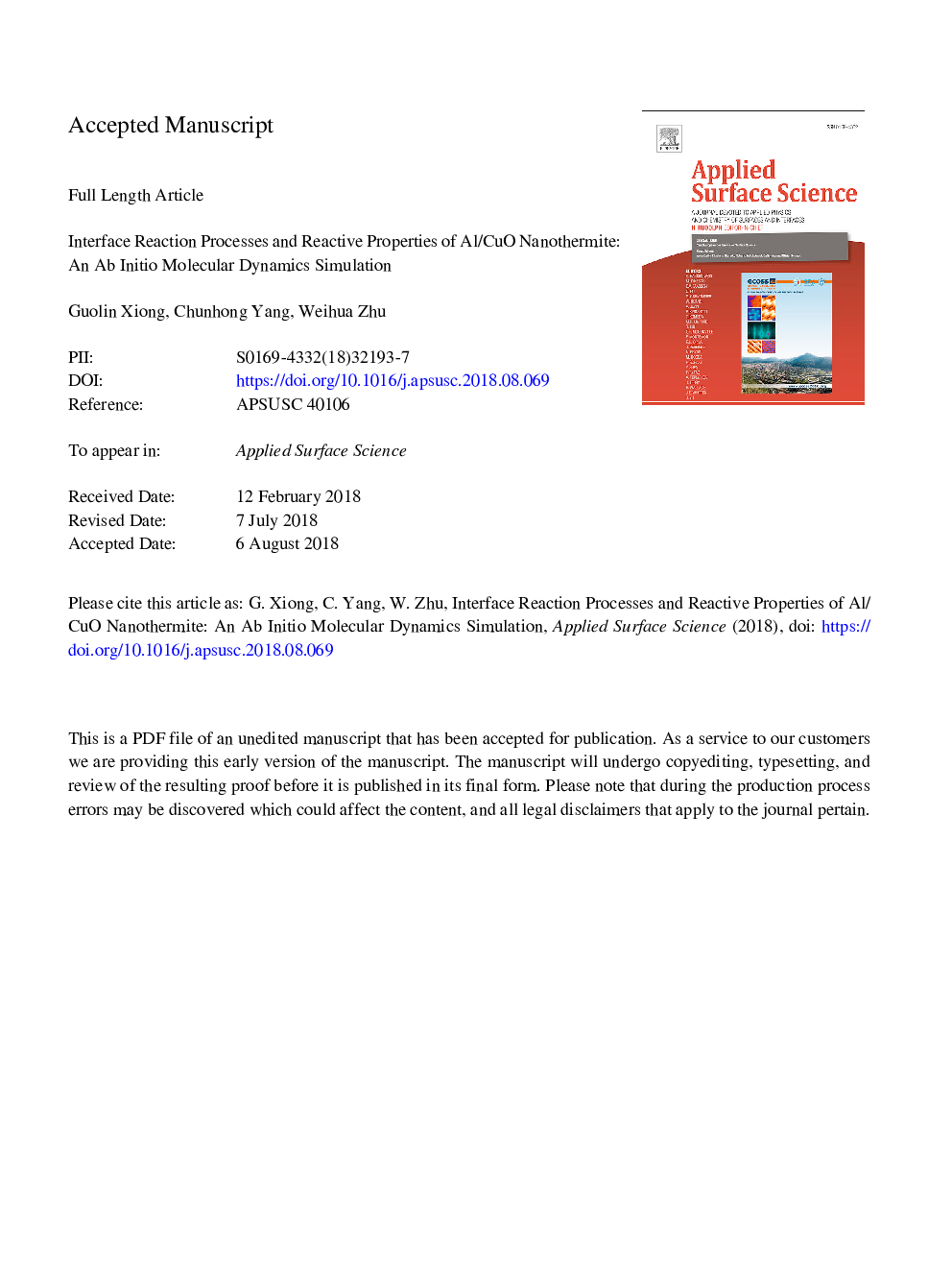| Article ID | Journal | Published Year | Pages | File Type |
|---|---|---|---|---|
| 7832971 | Applied Surface Science | 2018 | 38 Pages |
Abstract
Ab initio molecular dynamics simulations were performed to investigate the interface reaction processes and reactive properties of the Al/CuO thermite at high temperatures. The results indicate that the redox reactions that produced copper metal and aluminum oxide initiate at both the upper and lower interfaces. The higher the temperature is, the faster the atomic configuration changes. Especially, when the temperature is above 2000â¯K, the Cu atom starts to penetrate into the aluminum metal layer. The metal copper is ultimately doped by the aluminum atoms at 3000â¯K. There are significant differences between the propagation rates and time of duration for the upper and lower oxidation fronts. The population analysis of Bader charges were calculated to understand the change in the bonding properties of atoms associated with the redox reactions. At 830 and 1000â¯K, the interface reactions were done incompletely as shown in the reaction rates. At 2000â¯K, the interface reaction was finished fast, while at 3000â¯K, this reaction completed much more quickly; and moreover, the Cu atoms migrate into the aluminum oxide. The present molecular-dynamics study may provide new insight into understanding the reactive properties and characters of fast thermite reaction in atomic details.
Related Topics
Physical Sciences and Engineering
Chemistry
Physical and Theoretical Chemistry
Authors
Guolin Xiong, Chunhong Yang, Weihua Zhu,
